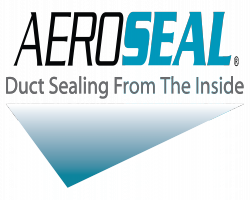
Dust and Allergies in Your Home
Pollen, dust mites, mold, animal dander and other contaminates are common allergy triggers. There is not much you can do about pollen or dust outside your home but when you’re indoors nothing is worse than having that month long runny nose during the fall or mold allergies in the spring. When you have leaky ductwork in your home you can expect with 100% certainty that these common contaminates are in there with you.
Dust and Allergies in Your Home May Be Caused by Duct Leaks
Do you notice substantial dust in your home? Ductwork is typically run through the attic, crawlspaces, basements or even behind walls. When you have leaks in your ductwork, they will suck air from these spaces into your living areas. By sealing your ductwork you can limit the entrance points of your home that allow dust, pollen, or mold into your home and insure a much cleaner and healthier environment. Homeowners who seal their ductwork with Aeroseal experience less dust and allergies in their homes!
How Much Could you Save with Duct Sealing by Aeroseal?
On average, homeowners lose 20-40% of their conditioned air through duct leaks.
How or Cold Rooms Are a Common Problem with a Simple Solution
People struggling with high temperatures variations between rooms or floors might not realize most of their conditioned air is escaping through duct leaks instead of flowing into their living space. Leaks in your ductwork allow cooled or heated air to escape into your attic, basement, crawlspace or even into your walls.
Your Hot or Cold Rooms May Be Caused by Duct Leaks
Do you notice little to no air flowing from your registers? Your HVAC system is using energy to push conditioned air through your ductwork and into your living spaces. When your duct system contains leaks this conditioned air is actually pushed into your attic, crawlspace, or basement. Sealing your ductwork will allow your system to properly heat and cool your home by keeping conditioned air where you want it.
Lower Your Energy Bills
Over 90% of existing buildings located throughout North America have air duct systems that contain small holes and cracks that reduce the level of comfort and increase heating and cooling costs. On average, 30 cents of every $1 spent on heating and cooling never makes it to your living spaces because it is leaking out of your ductwork.
Your High Utility Bills May Be Caused by Duct Leaks
Does your HVAC system run constantly? Do you notice higher than expected utility bills? Duct leaks are caused by a variety of factors including the age of the dwelling, type of construction, type of ductwork and local building codes. Repairing and patching leaks in HVAC duct systems saves cooling, heating, and fan energy. In air-based systems, ducts deliver all of the heating and cooling to conditioned spaces. Any duct leakage translates into extra air that must be supplied so sufficient heating or cooling reaches the conditioned space. This not only increases effective heating and cooling loads, it also increases fan energy due to increased flow and/or run time. Sealing duct leaks reduces the amount of heated or cooled air the supply fan must handle to deliver the same amount of air to the conditioned space.
Can Aeroseal fix my hot or cold rooms?
Can Aeroseal reduce the amount of dust in my home?
How much will Aeroseal save me in energy costs?
What does the Air Duct Diagnostic and Inspection tell me?
How long does Aeroseal last?
Will my house smell after Aeroseal?
Is the sealant used in Aeroseal safe?
How long does it take for Aeroseal to dry?
What VOCs are emitted by Aeroseal?
Should I be in the house during the Aeroseal application?
How big of a leak will Aeroseal seal?
What about leaks that are too big?
Where does the sealant leaking from the ductwork go?
Does Aeroseal harm electronics?
Does Aeroseal harm my HVAC system/accessories?
Do ducts need to be cleaned prior to sealing?
Extremely dirty ducts should be cleaned. We recommend that the technician assess the condition of ducts prior to beginning to Aeroseal process.
Can I clean my ducts if they are sealed by Aeroseal?
Ducts of all material types can be successfully cleaned after they have been sealed with Aeroseal.
Will the insides of my ductwork be covered with sealant after Aeroseal?
The Aeroseal process does not coat or line the ductwork. The only sealant remaining in the ducts will be at the spot of the leak that was sealed.
Can Aeroseal reduce the noise made by the return and supply grilles in my home?
This noise is usually the result of two conditions. One is created when the ductwork is undersized and air is rushing through your air duct system. The other condition is caused when a limited amount of air is allowed to flow through the indoor coil of your heating and cooling system. Once the exact problem has been identified, your contractor can provide the best solution for noise reduction.